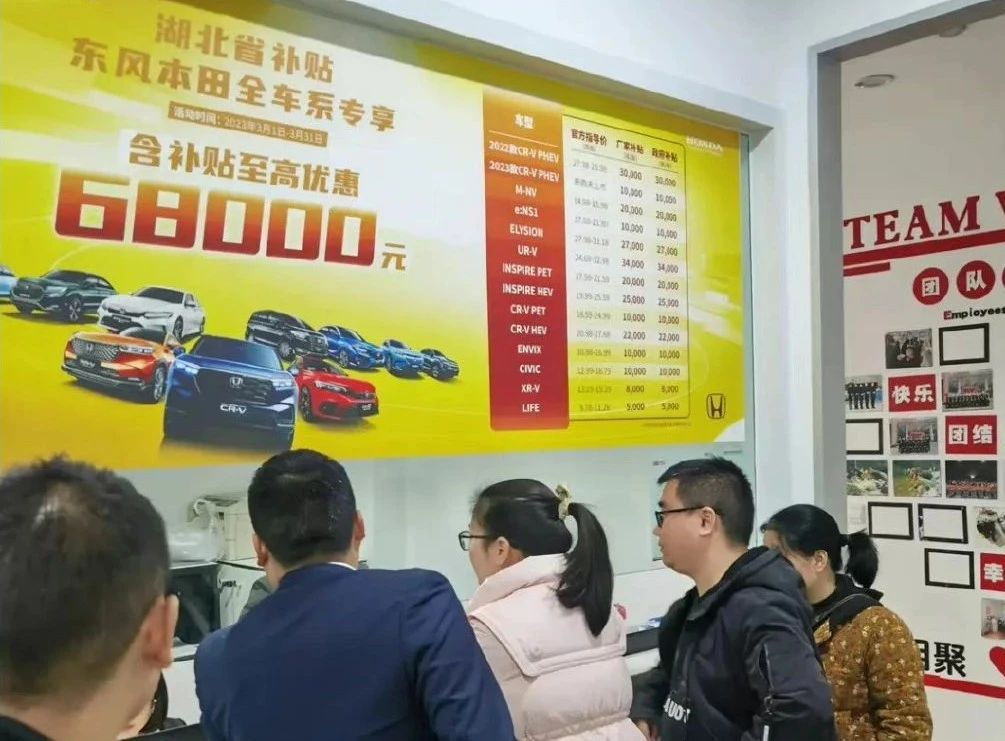Author | Qiukai Jun
Editor | Qiukai Jun
Here’s a joke:
Someone posted:
The dilemma of the new energy supply chain: phosphate iron is waiting for lithium iron factories to give orders, lithium iron factories are waiting for battery factories to give orders, battery factories are waiting for car factories to give orders, car factories are waiting for consumers to buy their products at a discounted price.
A genius comment:
However, consumers are all caught up in new energy stocks.
In early March, the “strongest car purchase discount season in Hubei history” started, with Dongfeng Citroen, Dongfeng Peugeot, Dongfeng Nissan, Dongfeng Honda, Dongfeng Fengshen and other automakers offering unprecedented discounts ranging from RMB5,000 to RMB90,000. Taking the Dongfeng Citroen C6 Gao Chong version, which has a guide price of RMB211,900, as an example, after subsidy, the price drops to just RMB121,900.
Not only in Hubei, but also in Beijing, Shanghai, Anhui, Zhejiang and many other provinces and cities with major automobile sales and production, different levels of subsidies have been introduced or continued. Geely, Hyundai, Toyota, Honda, SAIC, Changan, Great Wall, BBA, and even BYD, which has been performing well in the past one or two years, have all offered car purchase discounts.
During this unprecedented car promotion, the stock prices of listed car companies on the stock market have fallen sharply. Taking the same Tonghuashun Auto Vehicle Index as an example, it fell from 2,438.64 points at the closing price on March 1st to a low of 2,186.52 points within just under 10 trading days, a decline of 10.34\% — a complete halt to trading.
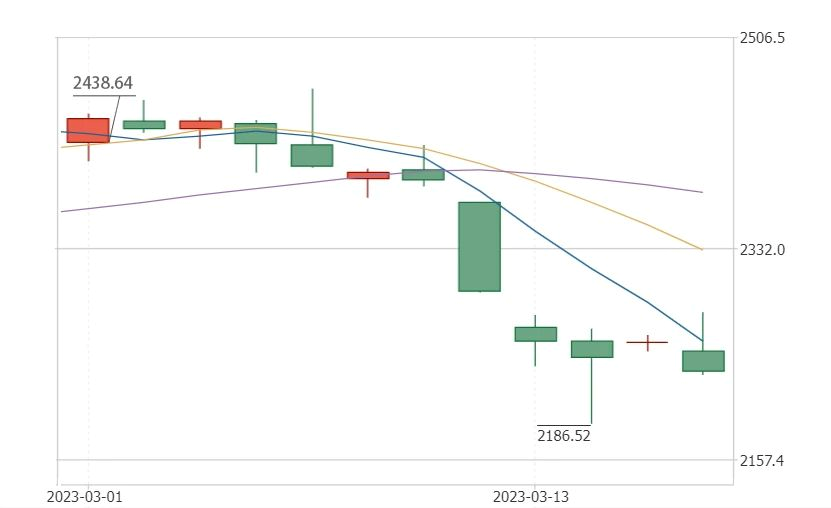
If you hold a large number of automobile stocks, the losses are equally staggering.
However, someone soon contributed a joke:
Someone wanted to buy a car last year, but didn’t have enough money, so bought car stocks with the intention of waiting for them to appreciate before buying a car. As a result, they lost RMB20,000. But when they saw the car they intended to buy had a discount of RMB40,000, they quickly cashed in and bought the car, feeling like they had made a profit.
The jokes are abundant, but the reality is stark – despite large-scale price promotions and discounts, consumers are still not buying in.
From the recent second week of March (March 6th-12th), the number of automotive insurance policies sold for passenger vehicles reached 313,700, a YoY decline of 8.5\%, and a MoM decline of 10.7\%.
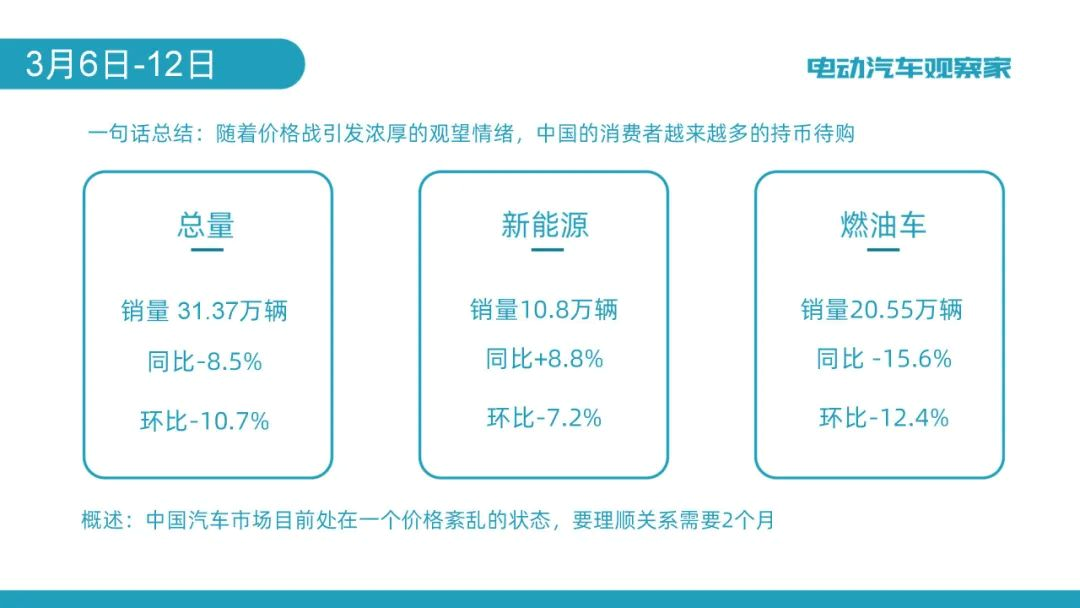 The large-scale price reduction has affected consumer expectations, and no one wants to be a victim. Even some brands with good demand are affected and forced to respond. However, consumer concerns still cannot be resolved.
The large-scale price reduction has affected consumer expectations, and no one wants to be a victim. Even some brands with good demand are affected and forced to respond. However, consumer concerns still cannot be resolved.
This seems like a lose-lose situation. If the price war continues, will it be the traditional car companies or the new energy car companies that fall first?
Multiple Factors at Play
The epicenter of this earthquake in the automotive industry is the joint venture gasoline cars. Why?
This is like the “Murder on the Orient Express”―everyone is a suspect.
The rise of new energy cars; the rise of independent brands; Tesla’s significant price drop; the follow-up of domestic new energy car companies; the strict control of the pandemic by the government last year, affecting inventory and sales; the end-of-year push by car manufacturers; the upcoming implementation of the National VI-B emission policy; people don’t have much money; the media is still criticizing joint venture brands and traditional gasoline cars…
However, once the earthquake occurs, when the city gate is on fire, the fish in the moat are the first to suffer. Independent brand gasoline cars also followed the price reduction, and new energy car models faced even greater price pressure. Consumers are worried about making a bad purchase, and the government is concerned about the decline of the automotive industry, while stock market investors are also accusing manufacturers…
This is a vicious cycle.
Price Reduction Campaign And Its Three Responses
No one can avoid this earthquake. However, there are different ways to respond to it.
The first response is “matching the price reduction,” mainly by other joint venture brands, including Shanghai GM Buick, Beijing Hyundai, GAC, and some BBA dealers. Of course, there are different levels of discounts.
The “matching the price reduction” also had an earlier wave, which followed the new energy vehicle companies that significantly reduced their prices with Tesla on January 6, including XPeng, Quest, Leapmotor (which reduced its prices earlier and later evolved into other groups), Toyota’s BZ series, Ford’s electric horse, and FF…
The second response is the “promotion group,” which does not necessarily have significant price reductions but offers discounts or benefits of one or two thousand to show their sincerity. BYD launched the Han EV Champion edition and the Tang DM-i Champion Edition on the evening of March 16. The entry threshold for the Han EV is as low as 209,800 yuan. BYD readily gave Han DM 10,000 yuan in cash subsidies, and the guiding price for buying the Han DM series before April 30 was less than 210,000 yuan.
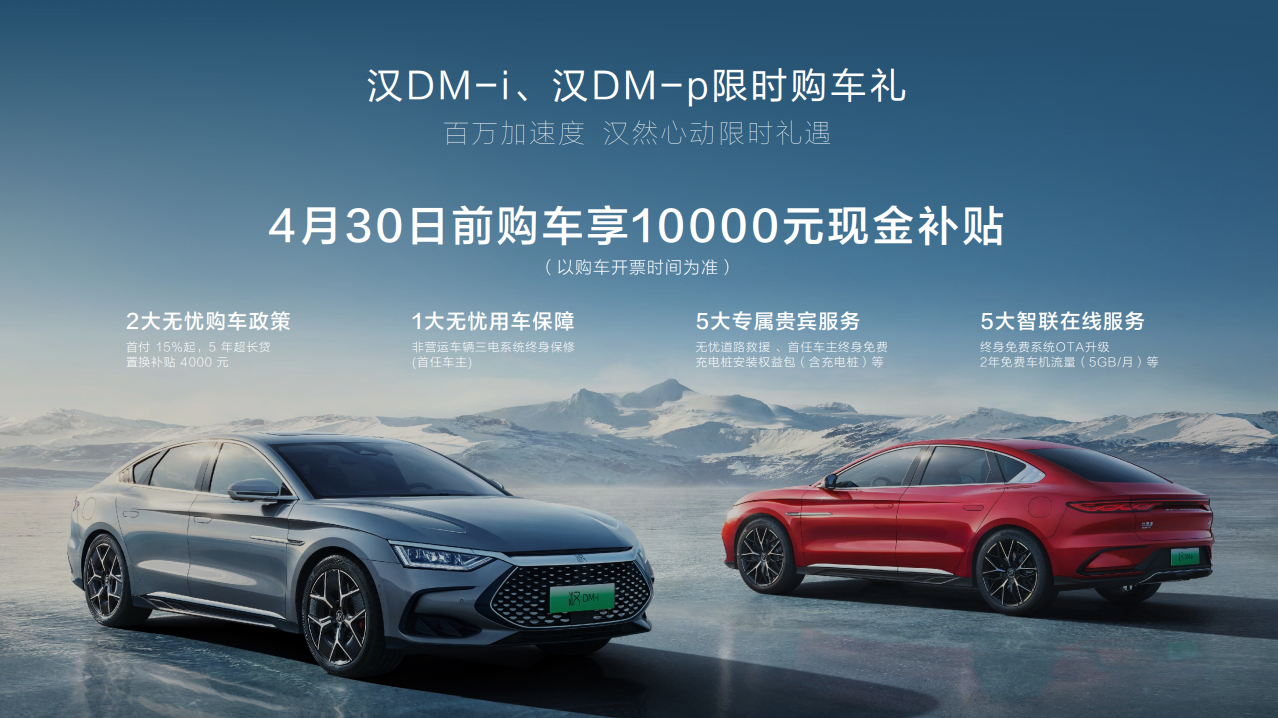 Before this, BYD’s Song Pro, Song PLUS, and Sea Lion have already offered discounts of 88 yuan or 8888 yuan for purchasing cars.
Before this, BYD’s Song Pro, Song PLUS, and Sea Lion have already offered discounts of 88 yuan or 8888 yuan for purchasing cars.
Similarly, Zeekr, NIO, LINGPAO, and AION have also offered some discounts.
The third type is the “price protection faction”. First is the display of Ideal Auto’s user car purchase price protection rights. Ideal provides a 90-day price protection for the purchase of L-series vehicles. If the price drops within 90 days, the difference will be returned. Afterwards, Leapmotor, LYNK & CO, NIO, TESLA, and KIA have launched a 90-day price protection policy. JIHU Auto has introduced a 120-day price protection policy.
Of course, some are both “discount factions” and “price protection factions.”
NIO, which has always maintained its prices, did not make a price protection promise this time. Previously, large-scale discounts appeared on NIO’s old models such as the ES8, ES6, and EC6 exhibition cars. However, the prices of the current models, especially the ET5, ET7, EC7, and new ES8 on the NT2.0 platform, remain firm. Pu Yang, the assistant vice president of sales and operation of NIO, stated through several media that NIO will not participate in price drops by cutting back configurations or benefits of the various types of ET5. “We believe that this wave of price cuts comes fiercely and retreats fast.”
From the measures taken to cope with the wave of price cuts, it can also be seen that there are significant differences in demand among different automakers. Those in the same price range as Tesla, A-level and B-level cars, all face enormous pressure to lower prices. The impact on Ideal and NIO, which have good demand for models above 300,000 yuan and A0-class models, is not significant. The A00-class models have already been competing on prices, which cannot be reduced any further.
“Oil” Death “Electricity” Sad, Lips and Teeth Cold
New energy vehicles are one of the driving forces behind the big price cuts in gasoline cars, and it was expected that new energy vehicles could also benefit from them. But now, there is a sense of hesitation among new energy vehicle consumers due to the decline in car prices. This is because the two are complementary products.
Ideal Auto is an example. Ideal Auto is a company that responds quickly to market changes and has the most abundant order reserves and the best sales situation. Its introduction of the price protection policy led to a group of companies following suit, demonstrating the changing market demand.
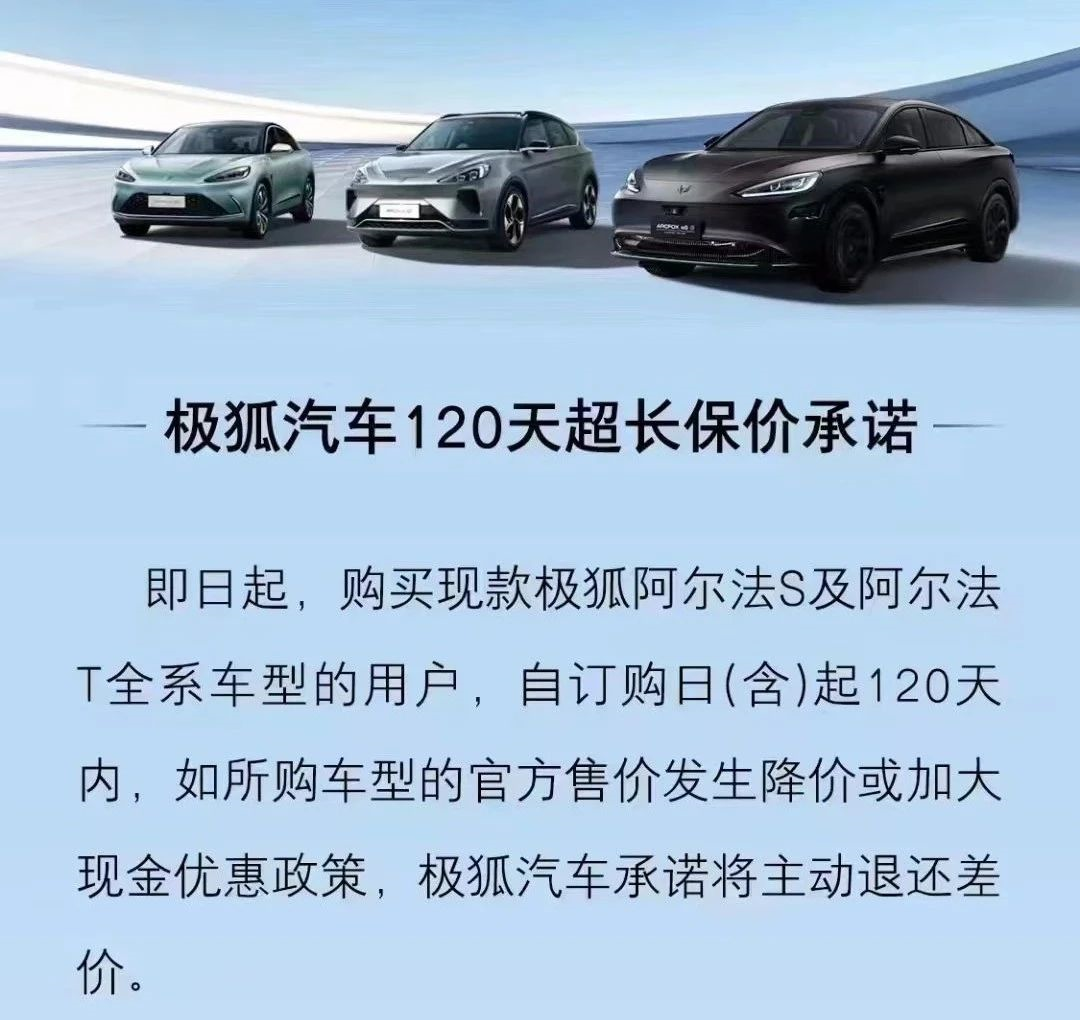
However, since the price protection policies are all time-limited, whether consumers can be truly reassured depends on the number of claims in the following weeks.According to Sun Tzu’s Art of War, besieging a city must leave a way out for the enemy, so they will not fight to the death. However, pressure from new energy vehicles and a combination of various factors have caused conflicts to arise. Traditional car companies, led by Dongfeng joint venture brands, have no choice but to offer huge subsidies to consumers to rethink the rationality of the price of new energy vehicles.
In terms of sales, the sales of fuel vehicles have decreased, while the sales of new energy vehicles are still on the rise, but the growth rate has greatly slowed down. In the second week of March, new energy vehicle sales only increased by 8.8% compared to the same period last year. According to the China Passenger Car Association, retail sales of new energy vehicles from March 1-12 only increased by 9% year-on-year, totaling 131,000 units.
This year, the new energy vehicle subsidy policy has completely phased out, resulting in a cost increase of about 10,000 yuan for pure electric models, and an increase of about 5,000 yuan for plug-in hybrid models. Despite the downward trend of lithium carbonate prices, it may not be reflected until the second half of the year. Many companies planned to raise prices this year, but were hit by Tesla’s price cuts at the beginning of the year, forcing them to follow suit. Some automakers are already selling cars at negative gross margins.
Therefore, although the penetration rate of new energy vehicles will continue to increase, the new energy vehicle brands will not all be happy. This year will accelerate differentiation, and companies without scale and tight capital chains will be eliminated.
The pattern of oil and electricity will not suddenly reverse. According to the China Passenger Car Association, as of February, the penetration rate of new energy passenger vehicles has exceeded 30%.
In this round of large price cuts, gasoline vehicles suffered the most. Some people predicted that new energy vehicles may take advantage of this opportunity to kill gasoline vehicles. In fact, the competition between new energy vehicles and fuel vehicles is not so optimistic.
First of all, the large price cuts for fuel vehicles are even more brutal. The brands of traditional joint venture car companies have lost their premium pricing advantage, which is only now being manifested by high amounts of government and enterprise subsidies. Industry observer Yang Zhao points out that the downfall of the premium pricing of traditional foreign brands has forced them to seriously compete with the market and consumers. However, this is only a “value return” rather than a “complete defeat.” It is simply profit returning.
On the other hand, after the price cuts for fuel vehicles, new energy vehicles also have to cut prices, making new energy vehicle companies that were already losing money potentially the first to be “straw-crushed” and die out.Secondly, some opinions hold that “oil-electric parity” has already emerged with BYD as the representative. New energy vehicles can now replace fuel vehicles on a large scale.
In fact, the current “oil-electric parity” refers to BYD’s “electric vehicles” being priced the same as the “fuel vehicles” of joint venture brands, provided that the latter have high gross profit.
From a first-principles perspective, plug-in hybrid models inevitably cost more than fuel vehicles because they have an extra power system and a larger battery. The battery pack of pure electric models is also larger and more expensive, making it almost impossible for them to be priced the same as equivalent-level fuel vehicles.
New energy vehicles are fundamentally aimed at replacing fuel vehicles by creating better experiences and low life cycle costs. At present, the cost difference between oil and electric is still big. Take BYD’s best-selling SUV SongPLUS DM-i as an example. Its current lowest price is 154,800 yuan, while the lowest price of the 2020 SongPLUS fuel version is only 115,800 yuan.
Therefore, although the replacement of fuel vehicles by new energy vehicles is the general trend, it still takes time. The author predicts that the penetration rate of new energy vehicles will only increase to about 35% this year, and fuel vehicles still make up the majority.
Even among new energy vehicles, plug-in hybrids and extended-range models will still have a relatively large market for quite some time. It is even possible that hybrid and extended-range systems with hydrogen engines or other clean energy engines will appear to continue to meet the needs of consumers at different levels and in different regions, together with pure electric vehicles.
This article is a translation by ChatGPT of a Chinese report from 42HOW. If you have any questions about it, please email bd@42how.com.
